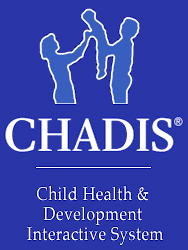The CDC Advisory Committee on Vaccine Practices (ACIP) wrapped up its much anticipated September meeting yesterday. The committee voted to remove the recommendation for MMRV vaccine under 4 years of age, and to eliminate it from the Vaccines for Children (VFC) program for those ages. They voted to require that consultation with a healthcare professional be required prior to vaccination against COVID-19. And they decided to table for now any votes on the Hepatitis B vaccine.
WARNING: This is a long post!
So what does this mean? MMRV is a combination vaccine that combines the measles-mumps-rubella vaccine and the varicella (chicken pox) vaccine into a single injection. (A nice video about this can be found here.) It has the benefit of fewer injections and the side effect of causing more fevers when used under 4 years of age. They are equally effective. High fevers can cause what is called febrile seizures and, indeed, higher rates of febrile seizures are seen with the MMRV when used under 4 years of age.
For this reason, in 2009, the ACIP committee recommended that it was preferred to provide the vaccines separately for the initial vaccine dose at 12-15 months. However, since they did not restrict the vaccine, families and providers could still elect to use the MMRV at that age if they judged it preferable because of the reduced number of shots. Febrile seizures from the MMRV remained rare regardless (8 in 10,000 doses, as opposed to 4 in 10,000 when the vaccines are given separately. The MMRV associated events are higher, but at 0.08% they remain pretty rare.). While understandably frightening, febrile seizures in young children are fairly common when children get fevers from any cause (affecting 2-5% of all children) and are widely understood to cause no harm to the children.
Following this meeting, if the proposals are finalized, MMRV option will no longer be available to children under 4 years through the VFC program, and private insurers are expected to follow. VFC supplies most of our vaccines at PMOW, and about 50% of childhood vaccines in the US overall. For most of our patients, this will cause no noticeable disruptions as we have been recommending the 2009 preference for avoiding the combined vaccine in younger children since, well, 2009 I think. However, if a family wishes to have the combined vaccine in order to reduce the number of injections, they will no longer have that option. Currently, about 15% of families nationally elect to use the MMRV at 12-15 months.
As for the healthcare provider consultation requirements for COVID vaccines, it should have no impact on patients getting vaccines at medical offices like ours, as that is provider consultation by definition. It potentially could affect patients getting vaccines through pharmacies, as it remains to be seen whether seeing a pharmacist will meet the bill, although Connecticut is working to make sure that will not be a barrier here. Primarily, though, the new ACIP members appear to want patients told about potential harms they attribute to COVID vaccines, so the devil, as they say, will be in the details of what studies and information are presented to patients. The meeting, however, raised a number of concerns related to cherry-picking data and the inaccurate characterization of studies that might be used to frighten patients, rather than informing them.
For example, individual cases of birth defects following vaccination were highlighted as a concern, while ignoring the large population studies that show no change in the rate of birth defects following vaccination. If you “inform” people that 3% of pregnancies following vaccination experience birth defects but leave out that the rate of birth defects is about 3% regardless, you are leaving out some pretty key background. It would be a good example of what Mark Twain meant when he supposedly said “There are three kinds of lies: lies, damned lies, and statistics.”
A fair amount of time was spent in the meeting arguing that the COVID hospitalization numbers were exaggerated by including people who were hospitalized for other reasons but happened to be tested for COVID while they were there. (Hospitalized “with COVID” rather than “for COVID.”) This is an old canard at this point, widely considered disproven. Causality is always a difficult nut when you have two discrete facts, like an illness and a positive test result, and you need to decide if the two things connect in a causal manner, but clinicians do this thousands of times a day. They are not always right, to be sure, but that fact that they were pretty good about it during the COVID pandemic is supported by many large population studies that show consistent correlations between COVID diagnoses and all-cause mortality during COVID waves. If the COVID isn’t killing them, why do more people always die when there’s more COVID going around? In fact, many of these studies suggest an undercount, possibly due to late onset complications causing readmission that were not included.
And, unsurprisingly, committee members once again discussed the dangers of myocarditis (inflammation of the heart muscle) from COVID vaccines, asserting without evidence that now there was a risk of sudden death during sleep from “subclinical myocarditis,” while ignoring the extensive body of evidence showing that the risks of myocarditis from disease far outweigh the risks from vaccination, that vaccination actually reduces that risk, and that the incidence of myocarditis associated with COVID vaccination has virtually vanished in the US since the spacing was increased between vaccine doses in 2022.
So we shall have to see going forward what kind of risk/benefit information is provided to patients and if it accurately reflects the state of our knowledge on vaccine safety, or will it be skewed to promote hesitancy. For now, the changes made by the committee so far should have only small impact for most of our patients.
Stay tuned!



